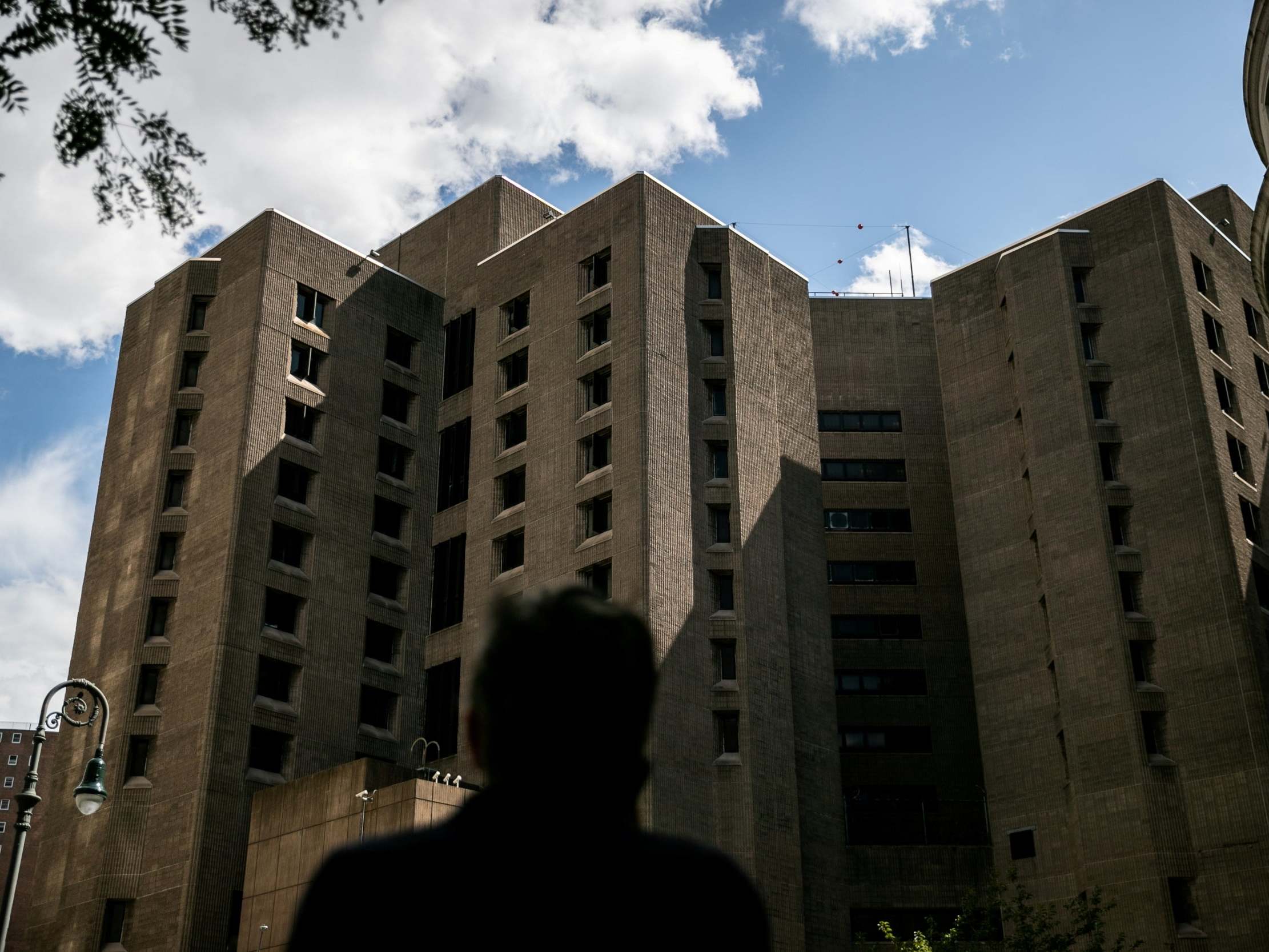Jeffrey Epstein death: Why was billionaire paedophile taken off suicide watch six days after being found unconscious in his cell?
Growing demands for answers into how disgraced financier was able to take sex trafficking secrets to grave without facing justice
Like all federal prisons, the Metropolitan Correctional Center in Lower Manhattan has a suicide prevention program designed for inmates who are at risk of taking their own lives.
After an apparent attempt three weeks ago, Jeffrey Epstein — the financier who was at the facility awaiting trial on charges he sexually abused dozens of girls — was placed on suicide watch and received daily psychiatric evaluations, a person familiar with his detention said.
But just six days later, on July 29, Epstein, 66, was taken off the watch for reasons that remained unclear on Saturday, the person said.
Twelve days after that, he hanged himself. Guards making their morning rounds discovered his body at 6.30am on Saturday, the Bureau of Prisons said.
Epstein’s suicide, coming shortly after prison officials in Manhattan deemed he was no longer at risk of taking his own life, raises questions about the steps prison officials took to keep him alive and ensure he would face his accusers in court.
The Justice Department immediately faced a backlash from elected officials and the public. Ben Sasse, who is on the Senate’s Judiciary committee, said in a letter to the Justice Department that it was inexcusable that Epstein had not been under a 24-hour watch. “These victims deserved to face their serial abuser in court,” he wrote.
Attorney General William Barr said in a statement that he had asked the inspector general for the Justice Department to open an investigation “into the circumstances of Mr Epstein’s death.” The FBI is also investigating, he said.
The federal Bureau of Prisons did not immediately respond to requests for information about its decision that Epstein was no longer a suicide risk.
The Metropolitan Correctional Center houses about 800 people awaiting either trial or sentencing in New York City, and over the years its inmates have included high-profile terrorists, white-collar criminals and organised crime figures.
Epstein had been held there since his arrest on July 6 on federal charges that he sexually abused and trafficked girls in the early 2000s.
Judge Richard Berman of US District Court had denied him bail, rejecting his request to be detained at his Upper East Side mansion as he awaited trial.
One federal prison official with knowledge of the incident confirmed Epstein had been taken off suicide watch recently and was being held alone in a cell in a special housing unit.

The official, who spoke on the condition of anonymity for fear of being fired, said guards found Epstein in an otherwise empty cell during morning rounds. He had hanged himself and he appeared to be dead.
It would have been extremely difficult for Epstein to harm himself had he still been on suicide watch, a second prison official said, also speaking on the condition of anonymity for fear of dismissal.
Inmates on suicide watch are generally placed in a special observation cell, surrounded with windows, with a bolted down bed and no bedclothes, the official said.
A correction officer — or sometimes a fellow inmate trained to be a “suicide companion” — is typically assigned to sit in an adjacent office and monitor the inmate constantly.
Robert Gangi, an expert on prisons and the former executive director of the Correctional Association of New York, said guards also generally take shoelaces and belts away from people on suicide watch. “It’s virtually impossible to kill yourself,” Gangi said.
Inmates can only be removed from the watch when the program coordinator, who is generally the chief psychologist at the facility, deems they are no longer at imminent risk for suicide, according a 2007 Bureau of Prison document outlining suicide prevention policies.
The inmates cannot be removed from the watch without a face-to-face psychological evaluation.
To take an inmate off suicide watch, a “post-watch report” needs to be completed, which includes an analysis of how the inmate’s circumstances have changed and why that merits removal from the watch, the document said.
Under Bureau of Prison regulations, the government’s jails and prisons must have at least one room designed for housing an inmate on suicide watch, and that room must allow staff members to control the inmate without compromising their ability to observe and protect them.
Every prison facility is required to have a suicide prevention program.
Suicide prevention cells must provide an “unobstructed view of the inmate” and “may not have fixtures or architectural features that would easily allow self-injury,” according to a Bureau of Prisons policy.
The prison or jail staff members are supposed to operate in shifts to keep the inmate under constant observation and to keep a log of the person’s behaviour, according to federal regulations.
The inmate is only supposed to be removed from the watch when he or she “is no longer at imminent risk for suicide,” the regulations say.
On July 23, Epstein was lying unconscious in a cell he shared with another inmate, with bruises on his neck.
Law enforcement officials at the time said his injuries were not serious, but the incident was investigated as a possible suicide.
Before that incident, the former financier had been housed in a cell with Nicholas Tartaglione, a former police officer facing murder charges.
Their cell was in a special unit with strict security measures that is used to separate some inmates from the general population.
New York Times
Join our commenting forum
Join thought-provoking conversations, follow other Independent readers and see their replies
Comments